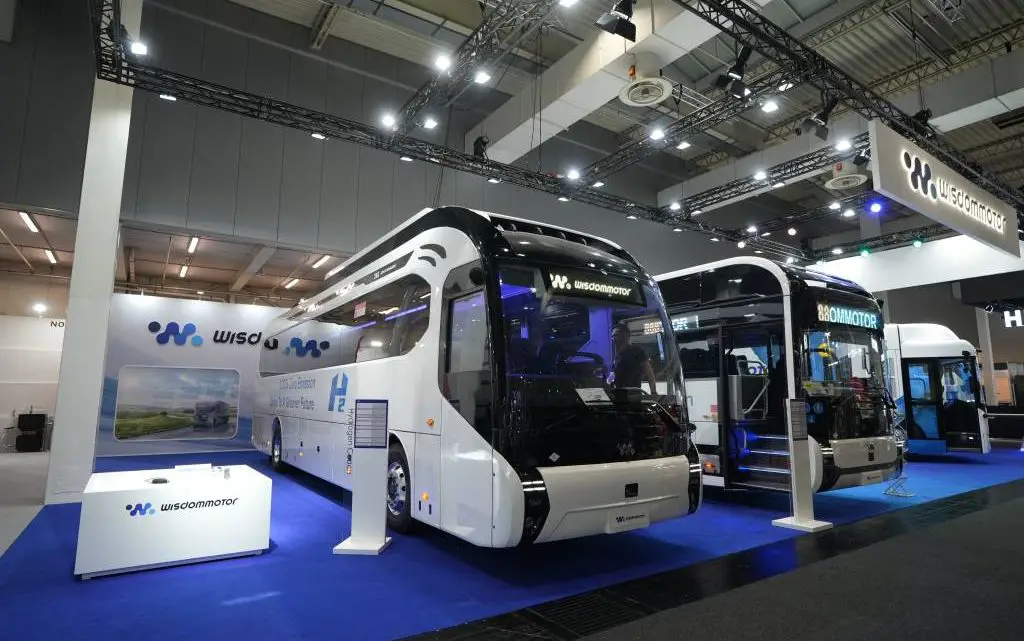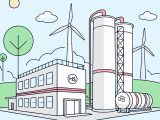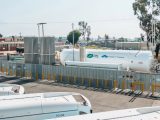
Hydrogen Fuel Cells Power New HY-X and Wisdom Motor Venture in Germany
October 1, 2025Riding the Hydrogen Wave
HY-X International Hydrogen and High Voltage Competence Center GmbH and Wisdom Motor are teaming up in a big way. This isn’t just another glossy press release—they’re building a complete zero-emission technology platform for commercial vehicles across Germany, with plans to spread that coverage all over Europe. Based in Düren, HY-X brings deep expertise in fleet support, ticking off everything from compliance to hands-on training and local production. Wisdom Motor, headquartered in Singapore, has already made waves in Asia, Europe, the Middle East and Australia with hydrogen and battery electric buses—like Hong Kong’s first hydrogen double-decker in 2024 and a fresh R&D center at InnoCentre in 2025.
The Fast Take
- Timing: Official signing at Busworld Europe on 7 October 2025 in Brussels.
- Leadership: HY-X MD Franz Peter Staudt partners with Wisdom Motor CEO Jingde Tang.
- Scope: From supplying FCEV and BEV buses to aftersales, spare parts logistics, mobile Flying Doctor teams, personnel training, SKD/CKD micro-factories, plus a permanent exhibition & test center.
- Market: Kicking off in Germany (population 83.2 million, GDP per capita $55,300) and gearing up for a Europe-wide rollout.
They’re slashing bus delivery lead times from 12–16 weeks down to roughly 6–8 weeks by setting up local micro-factories. And that exhibition and test center? It’ll let operators kick the tires with live demos, so there’s no guesswork.
Back in Germany’s Hydrogen Race
Germany’s National Hydrogen Strategy, launched in 2020, unlocked a €9 billion budget for green hydrogen production and the supporting hydrogen infrastructure. The goal: hit 5 GW of electrolyzer capacity by 2030. On top of that, the EU’s Alternative Fuels Infrastructure Directive calls for three hydrogen stations per million residents by now. But as of mid-2025, we’re sitting at barely 100 public refueling points—and most are clustered around western industrial zones. Eastern states are still playing catch-up, while operators wrestle with patchy coverage and murky fueling standards.
Under the Hood
H2 Fuel Cell Electric Vehicles (FCEVs) pack compressed hydrogen tanks onboard. It’s the magic of hydrogen fuel cells: hydrogen meets oxygen inside the stack, sparking an electrochemical reaction that churns out electricity, heat and nothing but water vapor. A battery buffer covers peak loads and captures energy via regenerative braking. You’re looking at over 300 km of range and refueling in under 15 minutes.
Battery Electric Vehicles (BEVs) rely on high-energy lithium-ion packs—these days, they’re pushing past 350 km in heavy-duty bus service thanks to advanced NMC chemistry and slick thermal management. Stop-and-go? Regenerative braking can reclaim up to 30% of your juice.
SKD/CKD Micro-factories bring semi and completely knocked-down kits to local assembly hubs in Germany. That snips transport and duty costs by up to 20%, speeds up time-to-market and kickstarts regional supply chains.
Integrated Service & Flying Doctor Teams are roving rapid-response units armed with diagnostic tools, spare modules and remote support links. They’re all about minimizing downtime for fleet operators chasing high availability rates.
Spilling Into the Supply Chain
This joint venture doesn’t just hand over buses. It’s lighting a spark upstream: more demand for electrolyzers, compressors, high-pressure storage tanks, fuel cell stacks and power electronics. If they hit their 1,000-bus target, annual green hydrogen needs could jump toward 40,000 tonnes—enough to justify new production lines. Local micro-factories could breathe life back into Germany’s coachbuilders, welding shops and cable outfitters. On top of that, Flying Doctor-led trainings will fatten the pipeline of skilled technicians—classic industrial decarbonization in action.
The Strategic Play
This JV sits smack in Germany’s decarbonization sweet spot. HY-X brings the regulatory know-how, market-entry savvy and service network. Wisdom Motor supplies the proven zero-emission technology lineup and fresh R&D firepower. Together, they cover all bases: turnkey sales, local assembly, after-sale support and operator training. With Germany aiming for a 40% cut in transport emissions by 2030 and the EU’s Fit for 55 package targeting 30% of new heavy-duty vehicles as zero-emission by decade’s end, municipal and private fleet renewals in Berlin, Munich and Hamburg alone are worth billions. That’s the prize this JV is gunning for.
Reality Check
Let’s keep it real: hydrogen infrastructure gaps are a tough nut to crack. Refueling costs hover around €8–10 per kg of H2, pushing total cost of ownership 20–30% above diesel. Subsidies—sometimes up to €400,000 per bus—can pull payback into a 5–7-year window, but only if fueling options are there. Europe’s regulatory patchwork—from national safety rules to cross-border approvals—adds even more friction. Micro-factories? They sound cool, but hitting scale at 200 vehicles a year isn’t guaranteed. At the end of the day, execution is everything. HY-X’s Flying Doctor band-aid could work wonders—if they nail response times and repair quality under real-world schedules.
Where It Goes Next
Get Germany right, and you’ve got a blueprint for all of Europe. France’s Hylot network, the Benelux H2morrow projects and the Nordic Hybrit corridors are obvious next stops. Utilities like RWE or Engie will be prime partners for ramping up green hydrogen output. Expect micro-factories to pop up near transit hubs in Hamburg, Frankfurt and Cologne. OEMs and service outfits will be watching like hawks, ready to jump in if this JV proves its model. The big question: can they scale fast enough to meet Europe’s 2030 climate deadlines? That’s where the rubber—powered by hydrogen fuel cells and zero-emission technology—really hits the road.



 With over 15 years of reporting hydrogen news, we are your premier source for the latest updates and insights in hydrogen and renewable energy.
With over 15 years of reporting hydrogen news, we are your premier source for the latest updates and insights in hydrogen and renewable energy.